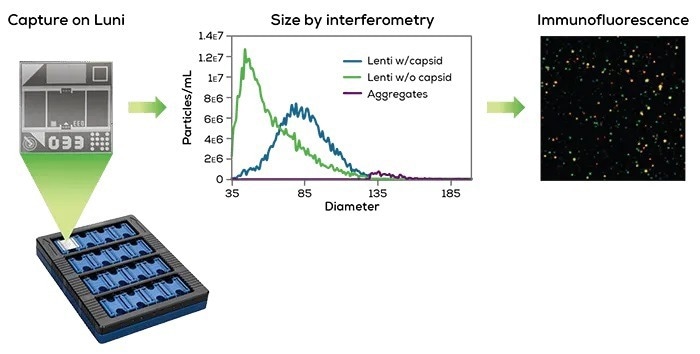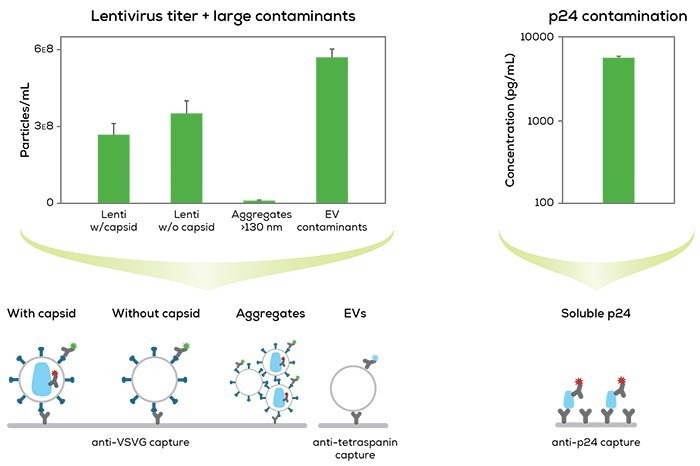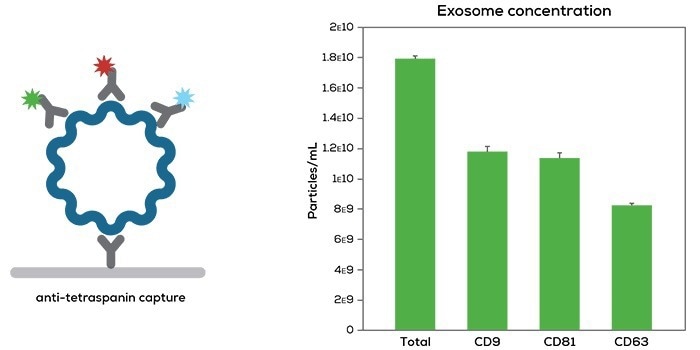Leprechaun is the only system that can accurately determine the viral titer of lentiviruses by identifying particles of the right size and structure. It can be used to count lentiviruses in crude or pure samples, without being affected by trickster particles that can throw off the results.
- Lentivirus titer
- Lentivirus structure
- Exosome concentration
- Contaminant analysis
Capabilities
Follow the rainbow
Leprechaun analyzes vectors such as lentivirus and exosomes, accommodating up to 16 samples concurrently. The Luni consumable efficiently captures and sizes 1–25 μL of the vector, subsequently identifying the structure of each particle through immunofluorescence. With readily available kits featuring comprehensive, easy-to-follow protocols, users can obtain results within hours.

Image Credit: Unchained Labs
Love the lenti
Determine lentivirus titers as low as 5 × 106 viral particles/mL, covering every stage from their emergence within cells to pre- and post-clean-up phases. Each Lentivirus Luni delivers five essential data points for lentivirus samples, whether in their crude or pure form.
Following capture, particles are sized to distinguish individual lentiviruses from aggregates. The use of fluorescent antibodies confirms the presence of capsids, checks for contamination by soluble p24, and detects any potential EVs that may be present. This marks the first opportunity to consistently monitor titer and purity throughout the process.

Image Credit: Unchained Labs
Explore the exosome
Determining the concentration of exosomes and confirming that the cell line made the required output can be challenging. Leprechaun makes it easy by grabbing exosomes by their surface proteins, sizing them up, and using fluorescence to confirm that all the suitable proteins are present. Users can customize an assay with their own capture or identification antibodies for unique situations using a Flex kit.

Image Credit: Unchained Labs